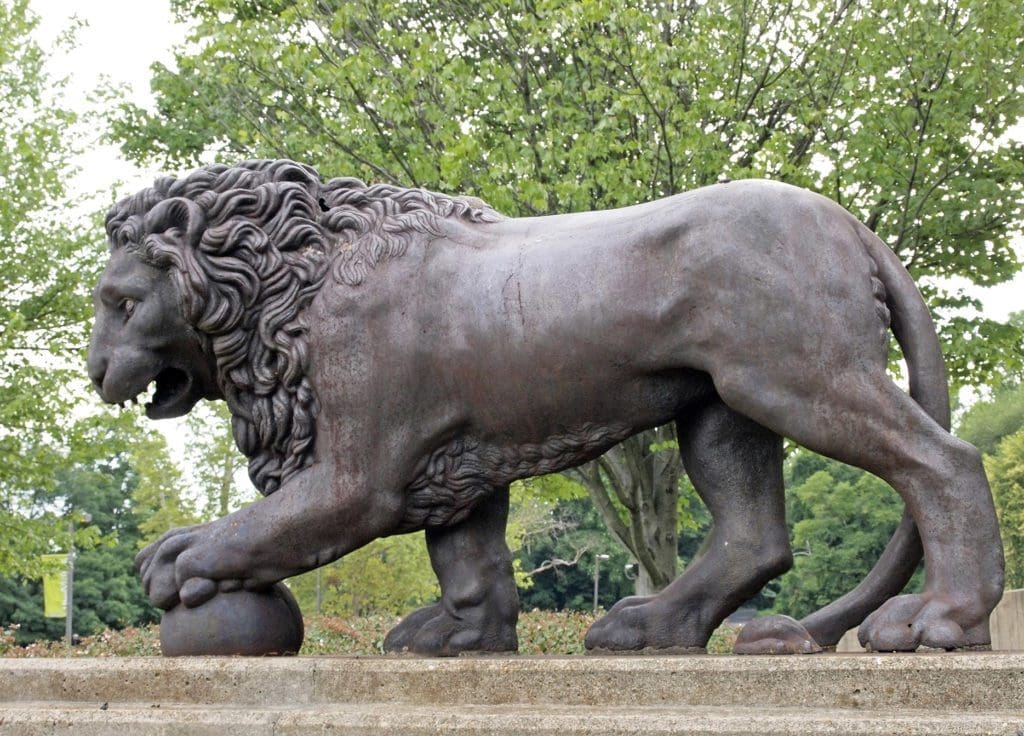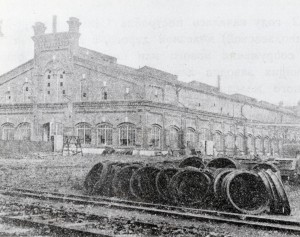Mann and Beast

When Andrew Eastwick was growing up in early nineteenth-century Philadelphia, he told himself that when he made his fortune, he would one day buy Bartram’s Garden. And in 1850, after building a tremendously successful company that manufactured railroad locomotives—and a contract to lay the first railroad in the Russian Empire—Eastwick returned to Philadelphia in 1849 and bought the old estate the following year. He erected “Bartram House,” a sprawling, 34-room mansion designed by Samuel Sloan in the Norman Gothic style in 1851 on the site of what is now the Eastwick Picnic Pavilion.

The Alexandroffsky Head Mechanical Works in St. Petersburg, ca. 1844. Eastwick and his partners Joseph Harrison and Thomas Winans produced locomotives and machinery for the first Moscow-St. Petersburg railroad for over a decade.
On returning from his ventures in Russia, Eastwick brought back 12 pieces of cast-iron statuary, presumably all made at his Alexandroffsky Head Mechanical Works in St. Petersburg (the factory and foundry where he and his partners built engines and cars for the first railroad between Moscow and St. Petersburg). Among these were two cast iron lions, reproductions of the famed marble “Medici Lions,” which have stood sentinel at the Loggia dei Lanzi in Florence, Italy since 1789. They are probably the first full-size reproductions of the statues in the Americas. From whom Eastwick acquired the molds is the stuff of speculation, but numerous copies were erected in Russia during this period—particularly in St. Petersburg, where bronze lions adorn the Dvortsovaya pier and the front of the State Russian Museum.

The south facade of Bartram Hall, which burned down in 1896; the site is now occupied by a picnic pavilion. The lions are visible in the foreground.
Eastwick’s lions stood guard in front of the primary (south) façade of Bartram House, overlooking the Schuylkill River—the house would have been a major landmark for the first north-south railroad, built as it was on the first major rise into the Philadelphia area. The wife of Andrew M. Eastwick, Jr. donated the sculptures to the Fairmount Park Art Association in 1887, where they sat near Memorial Hall (now the Please Touch Museum). They were moved to their present site at the Mann Center for the Performing Arts in 1976, but for about thirty five years, the lions held dominion here at Bartram’s Garden—and mightily so.



